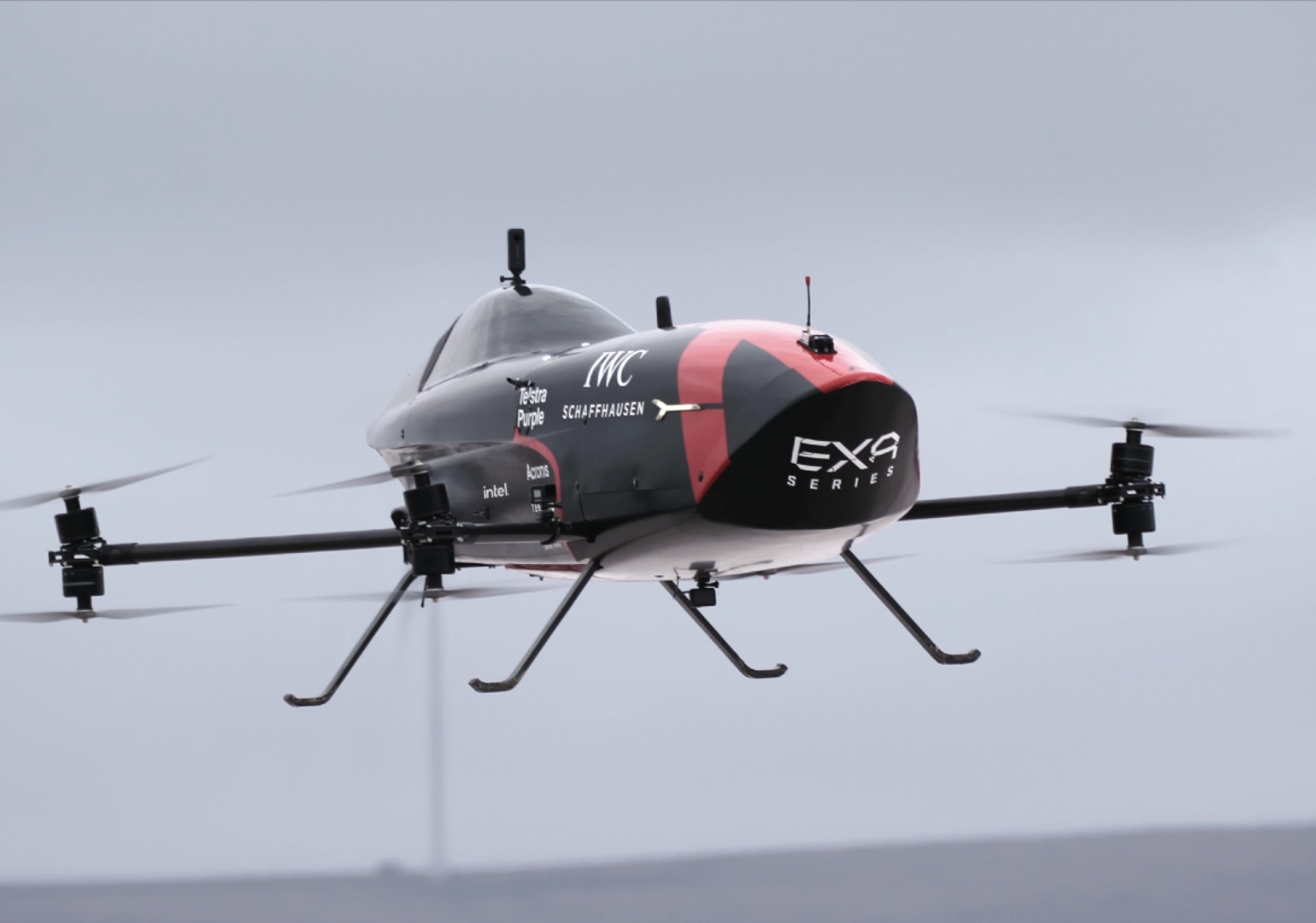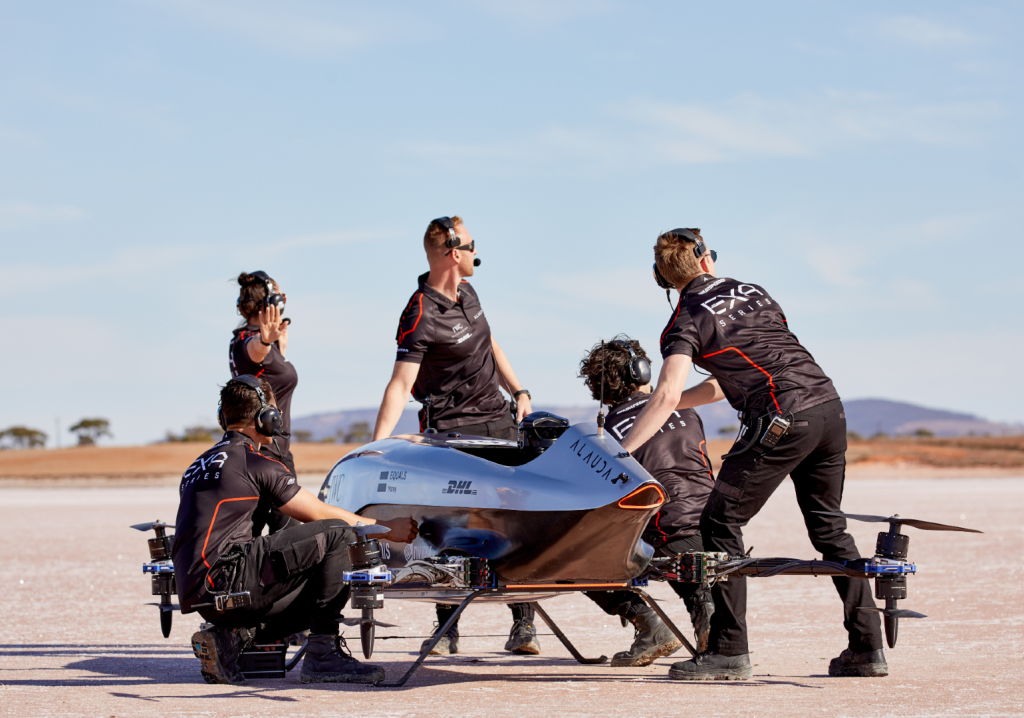Meet the entrepreneurs and innovators on a quest to make our flying car dreams come true.
Racing has been around since the invention of the automobile, kickstarting the automotive industry and bringing motoring to the masses.
Names such as Henry Ford, Marcel Renault, Charles Rolls and Enzo Ferrari, all synonymous with automotive prestige, got a foothold in the industry through racing, said Jack Withinshaw, co-founder and Chief Commercial Officer of Alauda Aeronautics and Airspeeder.
“They used their winnings from racing to start commercial companies, then went on to develop large consumer-ready vehicles,’ he said.
This tried-and-tested path is one that Alauda Aeronautics and Airspeeder are aiming to follow, albeit elevated a few feet off the ground — with electric vertical take-off and landing aircraft (eVTOL) developed at Alauda’s Adelaide base.
“This is where we build, test, manufacture, fly, crash and have all the fun with the vehicles,” Withinshaw said.
Meanwhile, Airspeeder Sports, headquartered in London, focuses on the racing series. The world’s first crewed flying race car, the Airspeeder MK4 eVTOL, is almost ready to make its debut — with the prototype due to fly this year and racing commencing in 2024.
Program Manager Ilaria Angeli — a mechanical engineer with an MBA in supercross, superbikes and motorsport who worked in the GT department at Ferrari — explained the vehicle’s inner workings to create.
Evolution of a flying supercar
The eight-propeller MK4, or ‘octocopter’, is Airspeeder’s next-generation vehicle, an upgrade from the remotely piloted MK3.
Weighing in at 950 kg, the MK4 is capable of reaching 360 kph in 30 seconds.
“The idea has always been to design an agile sports vehicle,” Angeli said. “So it has to have a small envelope and high power to weight ratio.”
Taking inspiration from the motorsport industry, Alauda integrated aviation standards with the goal of maximising performance, aerodynamics and manoeuvrability.
“We added bigger motors and better batteries, and integrated a hybrid powertrain with a turbo generator to boost performance. The hydrogen turbo generator combusts hydrogen to release energy that then charges the batteries and in turn drives the electric motors.” she said.
“We’ve also added aerodynamic surfaces so that it can go faster, and tilt-rotors so it can perform as a sports vehicle rather than cruising.”
Artificial intelligence is integrated into the control system, with gimballed thrust technology giving the vehicle the handling qualities of a Formula One car.
“With the gimbal props, for example, the intelligent controller has to take in all the information and use that to adapt so the motors and the props all behave and perform properly for the vehicle,” Angeli said.
Because the MK4 is a crewed vehicle, pilot safety was also a key consideration in the design.
“We have a safety cell, which is a carbon fibre monocoque to protect our pilots and enhance the structural integration of the actual vehicle itself,” Angeli said.
The modular design of the MK4 means racing teams can adapt the vehicle as they see fit.
“It’s all about designing it in a way that teams can plug in and play with their own technologies,” she said.

F1 in the sky
To date, Airspeeder has conducted 300 uncrewed MK3 test flights and numerous races.
“Last year we held two MVP races, which included multiple speeders circuit racing with augmented reality racetracks,” Angeli said. “It was close-proximity, bumper-to-bumper racing, so we had risk control systems, broadcast systems and all the infrastructure needed to conduct a race series.”
Flight testing has already begun on Airspeeder’s first crewed demonstrator, the Airspeeder MKM, which is shaping up to be the first manned eVTOL flying in Australian skies.
“The biggest next step is all about teams which will integrate their technology into the vehicle,” she said. “Together we will have a racing series where the innovation will have exponential growth.”
Next year, crewed MK4 speeders will participate in international races with VIPs onsite to witness the action, which will be live broadcasted globally.
“We’re also going to expand via our access series,” Angeli said. “This is the remotely piloted racing series, with more speeders racing together, along with dynamic power control stations.”
But all this is a stepping stone towards the private eVTOL space.
“Racing advances the industry in three areas: safety technology, performance technology, and public awareness and acceptance,” Withinshaw said.
Airspeeder and Alauda Aeronautics plan to replicate that same strategy in the sky, driving competitive and sporting advantage along with brand awareness.
“Then when we’re ready, we’ll move into the private vehicle sector so everybody can start owning a flying car,” he said.
There are already over 250 organisations developing flying cars, primarily focused on air taxis, Withinshaw said.
“Flying over our cities in certified vehicles with vertiport structures in places where the public have no awareness is tough,” he said. “We’re offering an alternative pathway to accelerate the vision of flying cars, which just so happens to be the one followed in the last century.”
